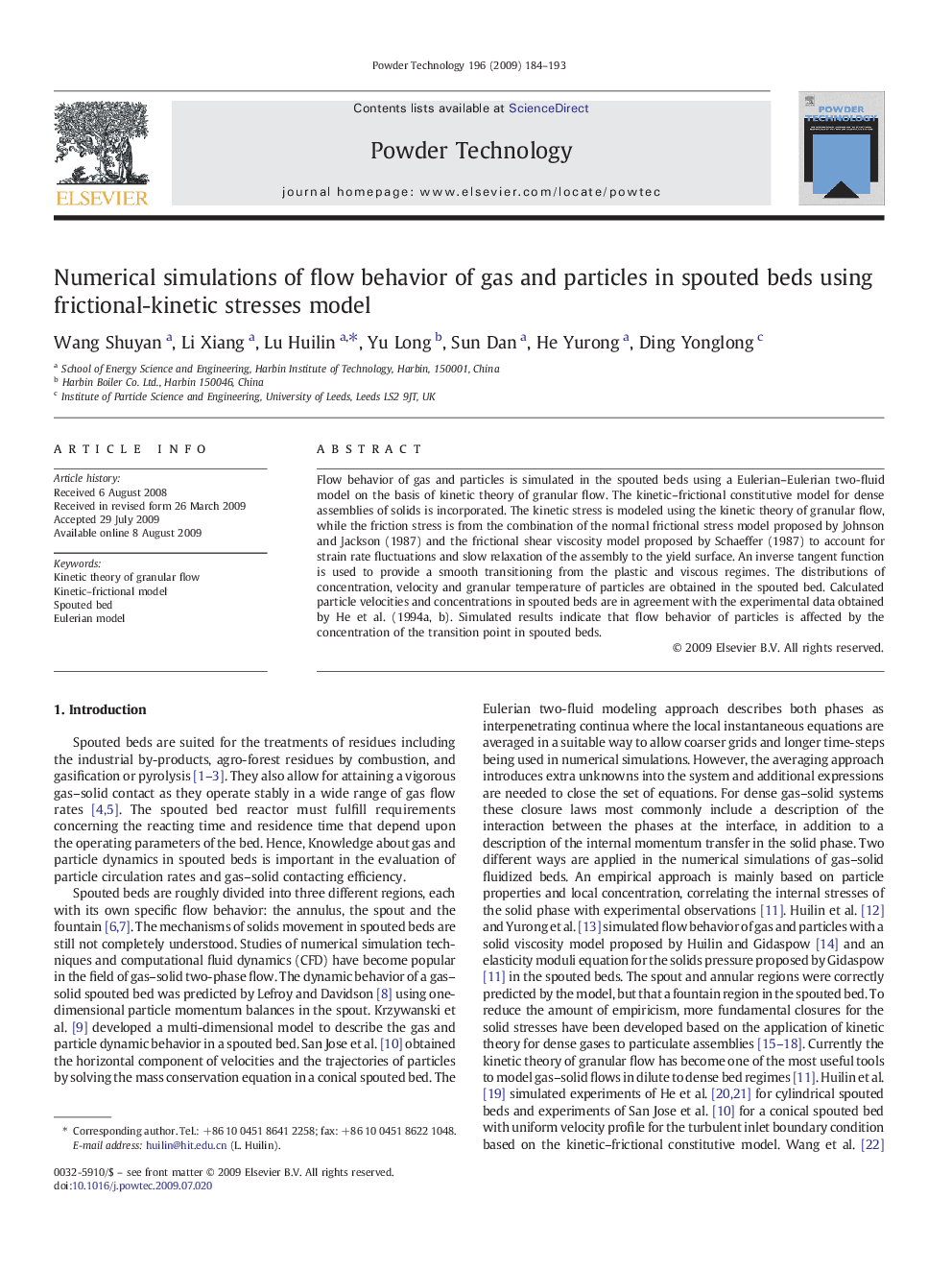| کد مقاله | کد نشریه | سال انتشار | مقاله انگلیسی | نسخه تمام متن |
|---|---|---|---|---|
| 238062 | 465739 | 2009 | 10 صفحه PDF | دانلود رایگان |

Flow behavior of gas and particles is simulated in the spouted beds using a Eulerian–Eulerian two-fluid model on the basis of kinetic theory of granular flow. The kinetic–frictional constitutive model for dense assemblies of solids is incorporated. The kinetic stress is modeled using the kinetic theory of granular flow, while the friction stress is from the combination of the normal frictional stress model proposed by Johnson and Jackson (1987) and the frictional shear viscosity model proposed by Schaeffer (1987) to account for strain rate fluctuations and slow relaxation of the assembly to the yield surface. An inverse tangent function is used to provide a smooth transitioning from the plastic and viscous regimes. The distributions of concentration, velocity and granular temperature of particles are obtained in the spouted bed. Calculated particle velocities and concentrations in spouted beds are in agreement with the experimental data obtained by He et al. (1994a, b). Simulated results indicate that flow behavior of particles is affected by the concentration of the transition point in spouted beds.
The frictional viscosity of solids is predicted from the equations proposed by Schaeffer (1987), and the frictional pressure of solids is predicted by Johnson–Jackson (1987) and Jenike (1987) equations, respectively. The frictional viscosity increases with the increase of concentration of particles. As the concentration of particles is below the concentration at the transition point, the frictional viscosity goes to zero and the solid viscosity approaches the kinetic viscosity of particles. Both models give an increase of frictional viscosity at the high concentrations.Figure optionsDownload as PowerPoint slide
Journal: Powder Technology - Volume 196, Issue 2, 10 December 2009, Pages 184–193